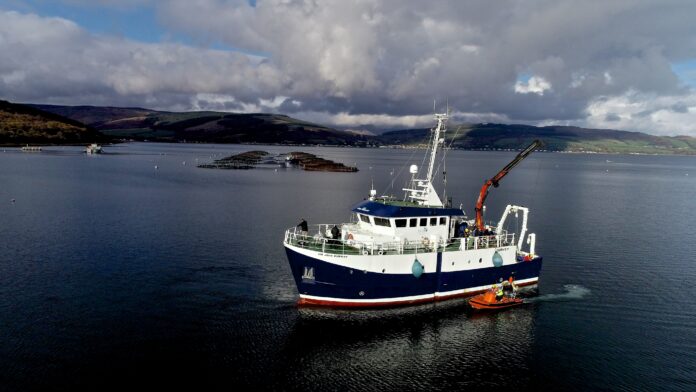SEPA launches consultation on proposed wild salmon protection zones and a sea lice exposure threshold that applies in these zones.
Protecting Scotland’s wild Atlantic salmon is a ‘national priority’, said SEPA – Scotland’s environmental watchdog on Friday, launching a consultation on proposed wild salmon protection zones and a sea lice exposure threshold that applies in these zones.
According to the release issued by SEPA, nearly 60 per cent of salmon rivers across Scotland, including on the West Coast and Western Isles, salmon populations are in poor conservation status.
The causes of the poor conservation status of wild salmon stocks are complex and believed to be due to a range of different factors rather than a single cause. But, amongst 12 high-level pressures on the status of salmon stocks identified by the Scottish Government, are sea lice from open-net pen finfish farms.

Lead body for salmon lice
The proposals follow Scottish Government confirming SEPA as the lead body responsible for managing the risk to wild salmonids from sea lice from marine finfish farms.
The proposals, which are open to 14 March 2022, will focus initially on implementing the proposed framework to protect wild salmon populations against harmful increases in sea lice concentrations. SEPA will do this by assessing the risk to wild salmon when determining applications for proposed new farms and for proposed increases in the number of fish farmed at existing farms.
SEPA has worked closely with scientists from Marine Scotland as well as with NatureScot and local planning authorities to develop a means of assessing the risk to wild Atlantic salmon posed by marine finfish farm developments.

Initial focus
According to the release, SEPA’s proposed initial focus reflects the Scottish Government’s stated priority, which is for a new framework for considering the risk to wild salmon from sea lice when consenting finfish farm developments. It is also necessary because more information is needed to enable an assessment of whether the operation of existing farms is resulting in a hazard to wild salmon populations. Some of this information will be provided through the implementation of the proposed framework.
SEPA has worked closely with scientists from Marine Scotland as well as with NatureScot and local planning authorities to develop a means of assessing the risk to wild Atlantic salmon posed by marine finfish farm developments. The core principles of this work were to use best available scientific evidence; ensure the risk assessments are practical to apply within a regulatory decision-making framework; and make the risk assessment process readily adaptive to additional evidence.
Implementation
In due course, implementation of the proposed framework will mean that, for the first time, all significant pressures on the water environment from marine finfish farms will be regulated under a single, coherent regulatory framework.

Terry A’Hearn, Chief Executive of the Scottish Environment Protection Agency, explained, “the protection of Scotland’s wild Atlantic salmon is a national priority which is why, following the Scottish Government confirming SEPA as the lead body responsible for managing the risk to wild salmonids from sea lice from marine finfish farms, and in line with stated priorities, we’re today launching a consultation on ambitious proposals for proposed wild salmon protection zones and a sea lice exposure threshold that applies in these zones.”
“We believe the proposals are practical and outcome focused, with phased implementation. Over the coming months we look forward to meeting and hearing views from a broad range of stakeholders with an interest in wild salmon, from community and environmental groups to the aquaculture sector itself before taking a final view in 2022.”

